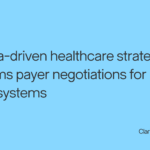As economic purchasing power and decision-making increasingly fall within the hands of patients, and as non-traditional healthcare providers, like Amazon and Walmart, push care into retail experiences, healthcare consumers are becoming more selective, and some may be more willing to “shop around” for health services. With “healthcare consumerism” on the rise, healthcare providers will need to change the way they market, deliver, and charge for services in order to remain competitive. In particular, healthcare organizations will need to take a targeted, patient-centric approach if they aim to drive patient acquisition and loyalty.
Taking a patient-centric approach to drive patient loyalty
Taking a patient-centric approach involves tailoring the delivery of services to the ways in which patients prefer to receive services as they flow through the continuum of care. In other words: meeting them where they are. This could be accomplished by bringing healthcare outside of a facility and into the patient’s home or by understanding their needs, and keeping them engaged in proactive healthcare decisions.
Assessing patient patterns by looking at single points of care doesn’t provide the full picture. Organizations must view the patient journey holistically to drive patient acquisition and loyalty. What happened before and after an event? At which touchpoints are we gaining and losing patients? Where are patients going outside of our network? Once you understand how patients move through the care continuum, you can tailor services and structure holistic service lines in ways that align with how patients want to interact with you.
Understanding patients’ clinical and social needs to provide better care services
Research suggests that social, behavioral, and economic factors (SBDoH) are among the primary drivers of health outcomes and that social and economic factors shape individuals’ health behaviors¹. These health behaviors ultimately affect how and to what degree patients interact with the healthcare system². This is why it’s critial to understand the demographic and socioeconomic factors that characterize your patient population. You can support your organization’s strategic plans to drive patient acquisition and loyalty by ensuring that programs and services are well-suited to the populations you serve. You can also play a role in supporting health equity by identifying and closing gaps in access to critical care services or support programs.
Which localities have the highest concentration of people over 65? Does a substantial portion of the population within a certain locality lack access to a vehicle? Or a caretaker in the home? What other factors may be influencing your patients’ health?
Assessing the demographic and social characteristics of your patient population provides crucial context for their behaviors and interactions with the healthcare system. With a keen understanding of the patient journey as well as the interests, preferences, and SBDoH factors of your population, healthcare providers will be better positioned to stay competitive in a consumer-driven market.
Sources:
1 Artiga, S., Hinton, H. Published: May 10, 2018. (2019, July 9). Beyond health care: The role of Social Determinants in promoting health and health equity. KFF. kff.org/racial-equity-and-health-policy/issue-brief/beyond-health-care-the-role-of-social-determinants-in-promoting-health-and-health-equity/
2 World Health Organization. Social Determinants of Health. who.int/health-topics/social-determinants-of-health#tab=tab_1






